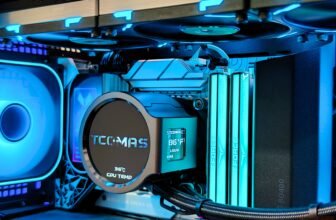As SSD technology continues to evolve, PCIe 4.0 drives have found their stride. While PCIe 5.0 is slowly gaining ground with its higher theoretical speeds, it still comes at a premium and requires the latest platform support. PCIe 4.0, on the other hand, has matured into a highly competitive segment where prices have dropped, firmware has stabilized, and performance is more than enough for most use cases—from gaming and content creation to general productivity.
ORICO, a brand more commonly associated with external storage solutions and USB hubs, is stepping further into the internal storage space with its O7000 series PCIe 4.0 M.2 NVMe SSDs. This lineup aims to offer high-end Gen4 performance without pushing into Gen5 pricing. With models ranging from 512GB up to 4TB, the O7000 targets users who want solid performance and reliability from a relatively lesser-known name in the SSD market.
We’re taking a look at the 1TB version in this review, which is rated for sequential read speeds up to 7000 MB/s and writes up to 6500 MB/s. Those figures are right in line with some of the top-performing PCIe 4.0 drives out there, at least on paper. What really matters, though, is how it handles real workloads, thermals under sustained loads, and whether it delivers the kind of value users expect in this crowded segment. Let’s dive in and see where the ORICO O7000 lands.
| Specification | Orrico O7000 1TB | Orrico O7000 2TB | Orrico O7000 4TB |
|---|---|---|---|
| Current Pricing | $69.99 | $119.99 | $234.99 |
| Form Factor | M.2 2280 | M.2 2280 | M.2 2280 |
| Interface / Protocol | PCIe 4.0 x4 | PCIe 4.0 x4 | PCIe 4.0 x4 |
| NVMe 2.0 | NVMe 2.0 | NVMe 2.0 | |
| Controller | Maxio MAP1602A | Maxio MAP1602A | Maxio MAP1602A |
| DRAM | DRAMless (HMB) | DRAMless (HMB) | DRAMless (HMB) |
| NAND Flash | YMTC 232L QLC | YMTC 232L QLC | YMTC 232L QLC |
| Sequential Read | Up to 7,000 MB/s | Up to 7,000 MB/s | Up to 7,000 MB/s |
| Sequential Write | Up to 6,500 MB/s | Up to 6,500 MB/s | Up to 6,500 MB/s |
| Random Read (IOPS) | Up to 1,000,000 | Up to 1,000,000 | Up to 1,000,000 |
| Random Write (IOPS) | Up to 800,000 | Up to 800,000 | Up to 800,000 |
| Endurance (TBW) | 600 TBW | 1,200 TBW | 2,400 TBW |
| Warranty | 5 Years | 5 Years | 5 Years |
Unboxing
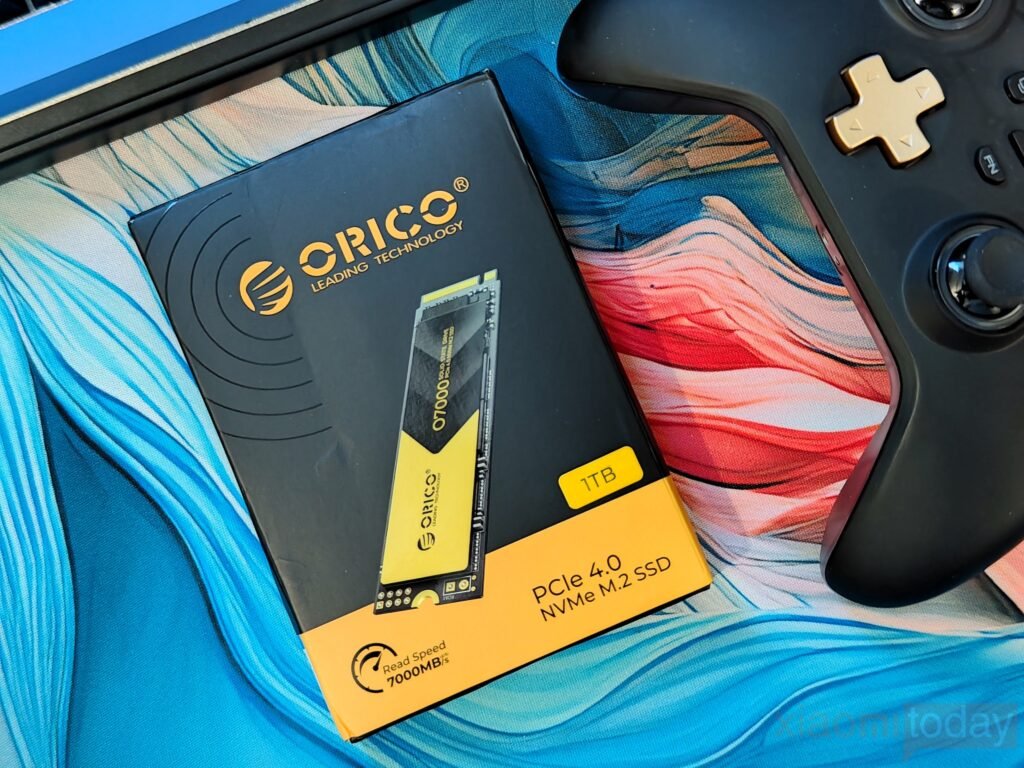
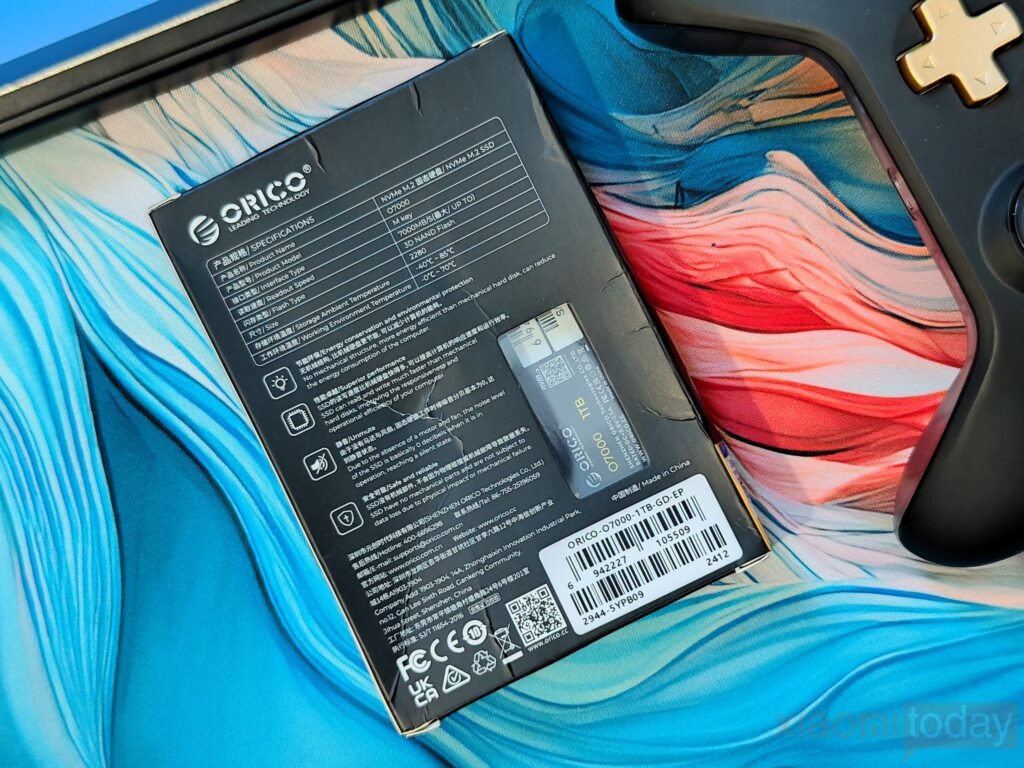
The unboxing experience of the ORICO O7000 PCIe 4.0 NVMe M.2 SSD is simple and efficient. The packaging is clean, with the main focus on the product. The front of the box clearly displays the key specs, such as the 1TB capacity and the read speed of up to 7000MB/s, along with an image of the SSD. The back includes a list of detailed technical information, including temperature tolerances, interface type, and the use of 3D NAND flash, presented in both English and Chinese.
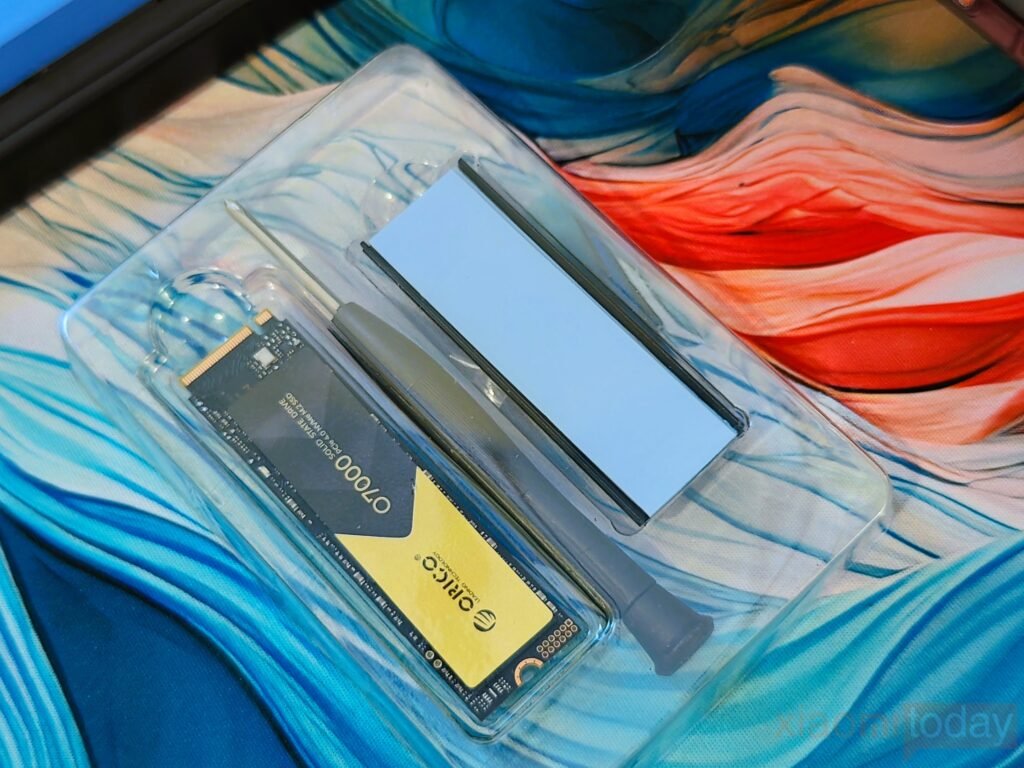
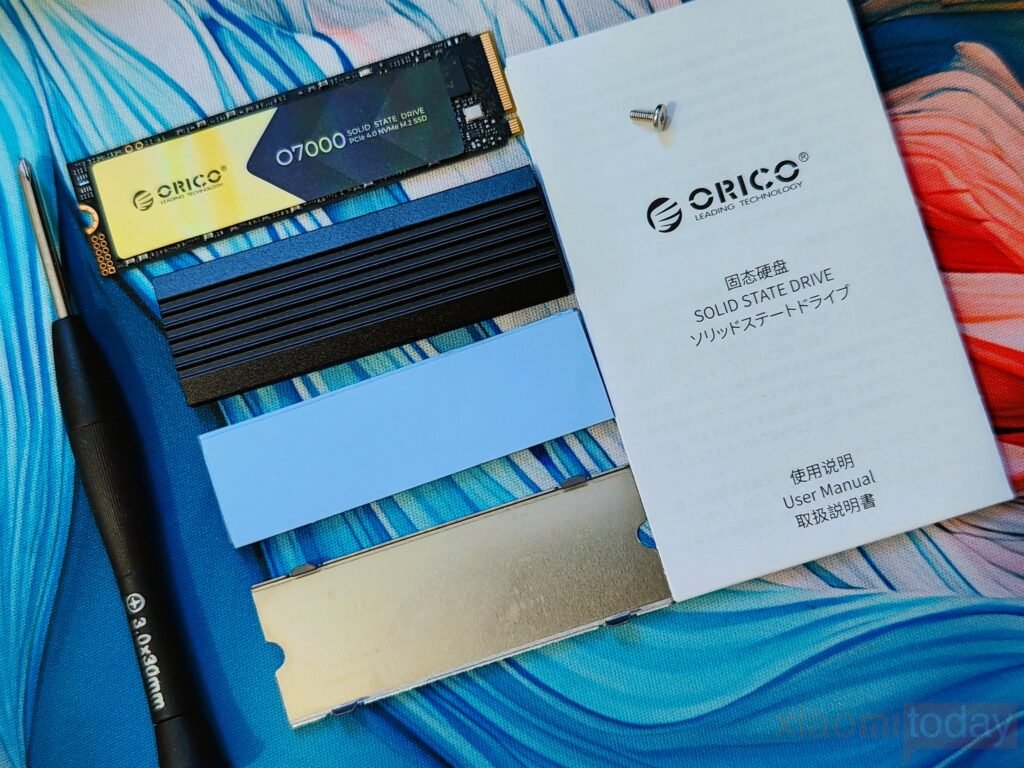
Once opened, the SSD is neatly tucked into a secure plastic tray, ensuring it stays protected during transit. Inside the package, you’ll find the SSD itself, along with a small selection of accessories: an installation manual for easy setup, a screw for mounting, a screwdriver to assist with installation, two thermal pads for heat management, and an aluminum cooler for added thermal performance. Everything is neatly packed, making the process of getting started with the drive quick and hassle-free.
Closer Look
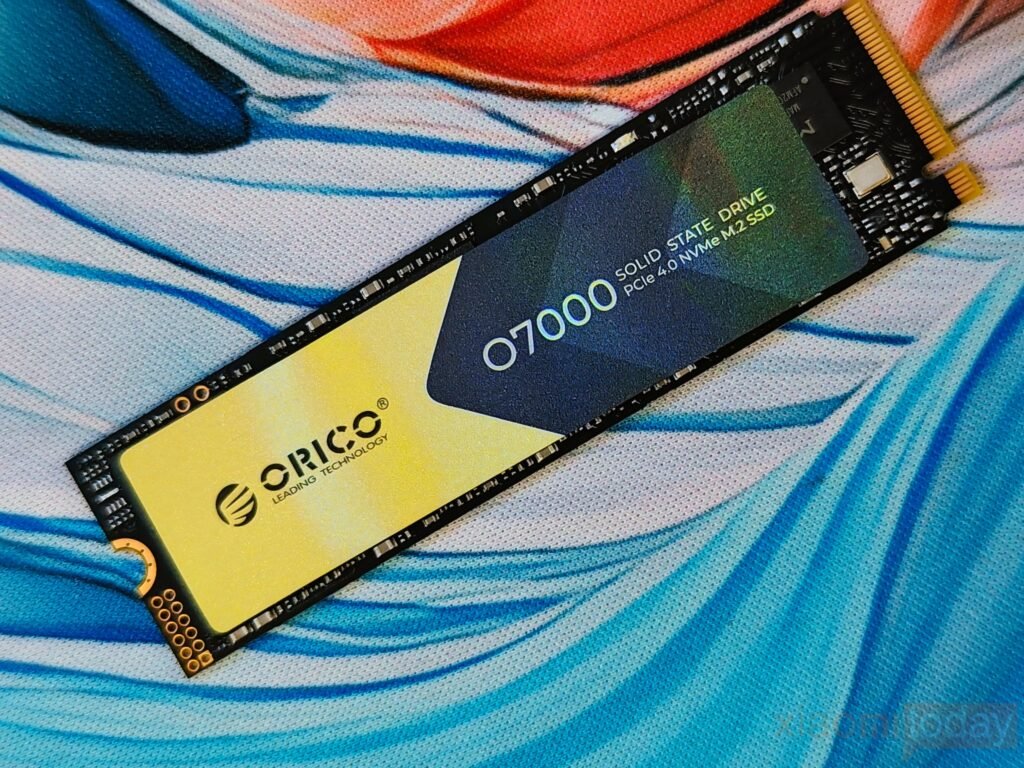
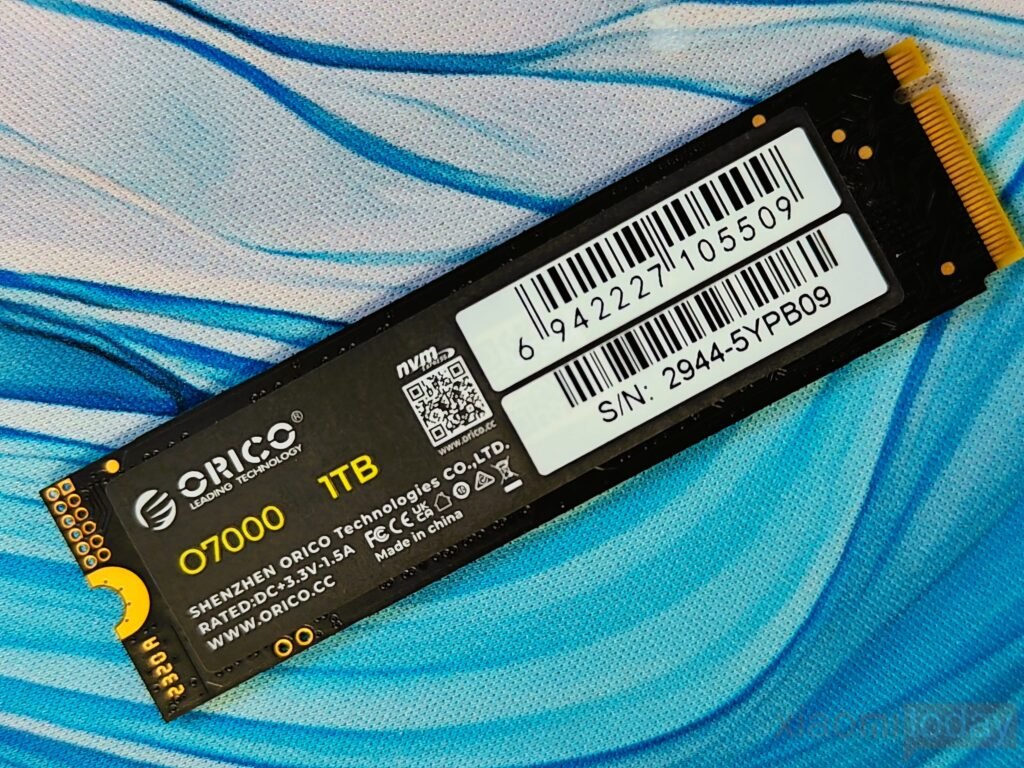
The ORICO O7000 has a straightforward look on both sides. The front side has a black and gold label with the model name and drive type printed on it—PCIe 4.0 NVMe M.2. The rest of the front shows some of the onboard components, but most are covered by the label. The back side includes a black label with capacity marking (1TB in this review), certification logos, power rating, and serial numbers. There’s also a QR code and the company’s web address. Both sides are clean and well-organized, with no extra components sticking out. It’s a standard M.2 2280 layout that should fit easily into most desktops or laptops that support Gen4 drives.
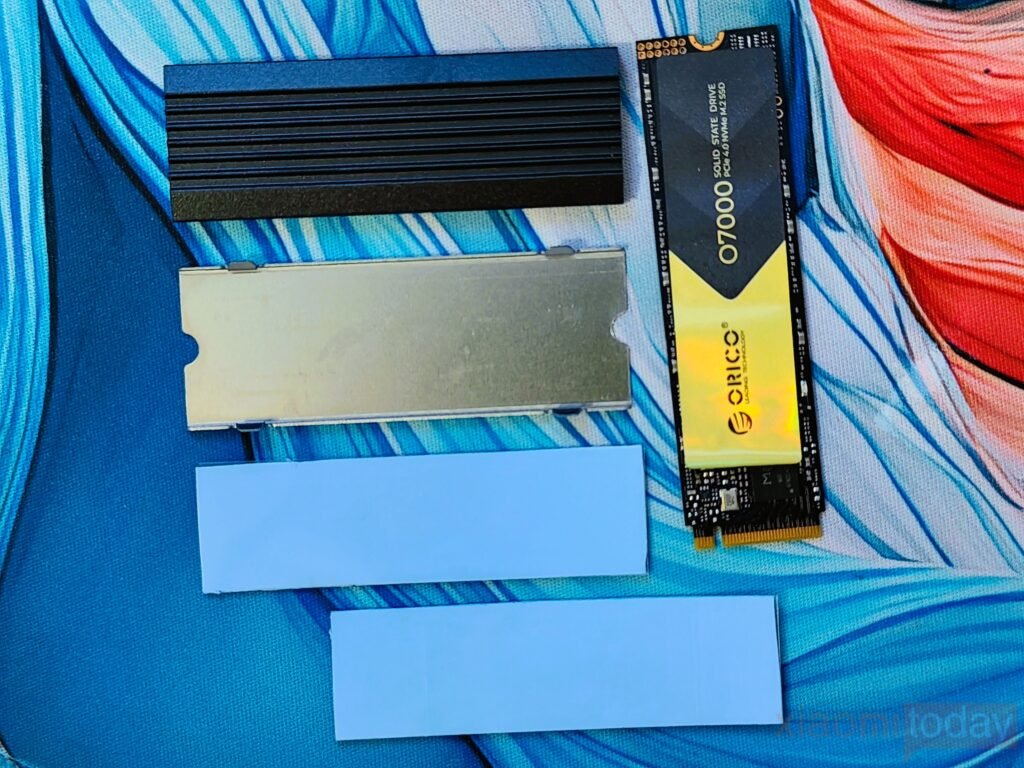
The ORICO O7000 includes a separate heatsink, which adds some flexibility depending on how you plan to use it. The heatsink is made of black aluminum with a rigid surface that helps with heat dissipation. In testing, it kept the drive running cool even during longer gaming sessions and large file transfers. For laptop users or small form factor builds, the ability to install the drive without the heatsink is useful, especially when space is tight. Installing the SSD itself is straightforward—just slot it into the M.2 connector and you’re set to go.
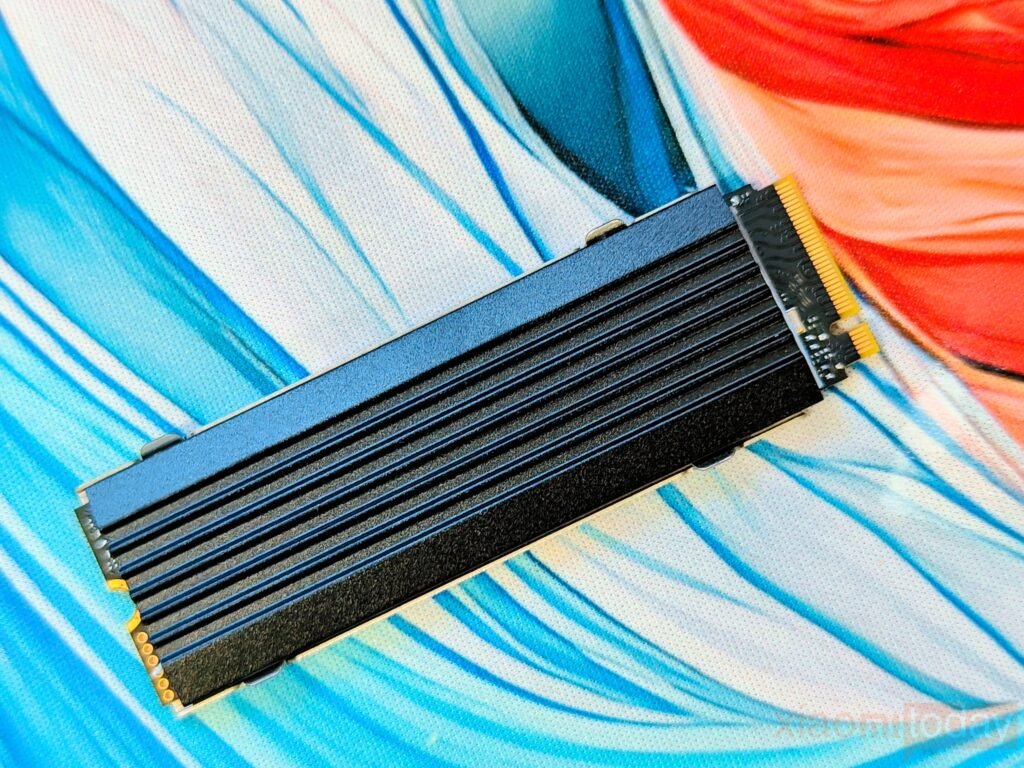
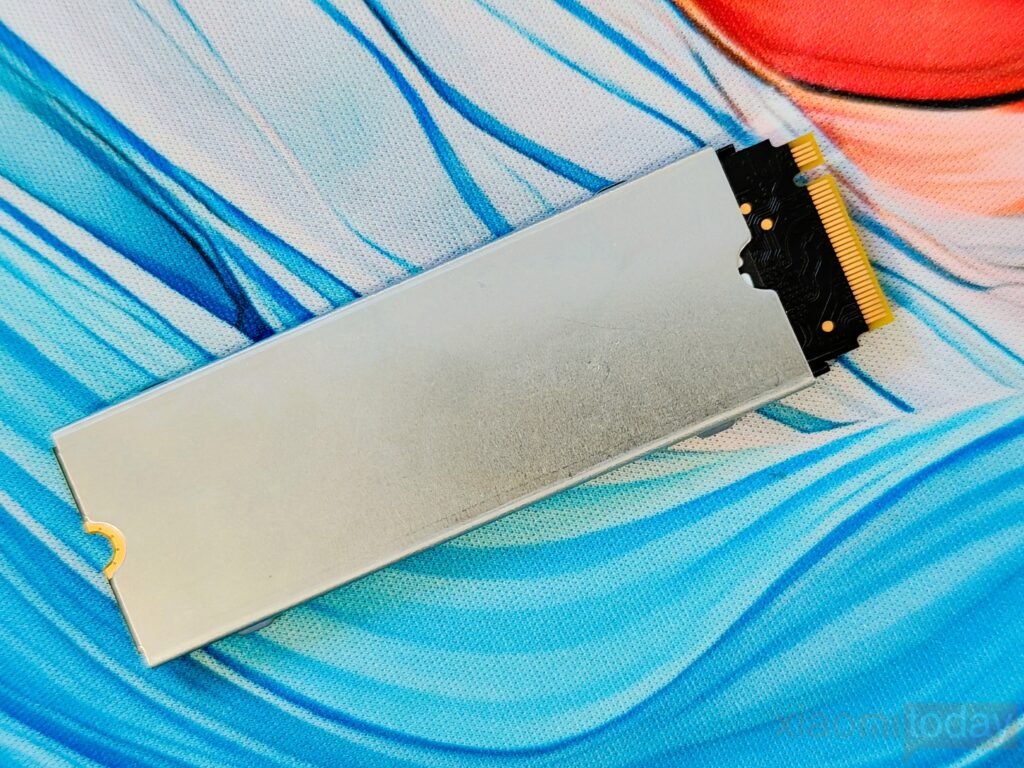
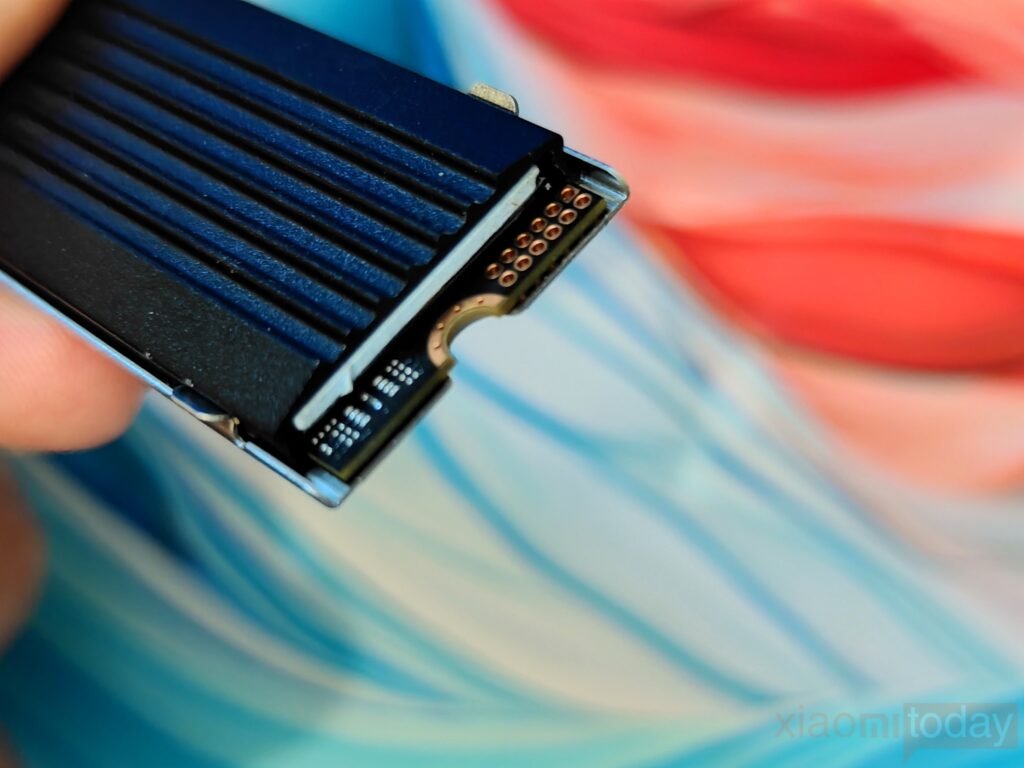
Installing the heatsink takes a bit more care. The thermal pad doesn’t have any adhesive, so you’ll need to line it up properly before placing the heatsink on top. It’s not difficult, just something to be aware of. The heatsink’s slim profile means it should fit well in most desktop systems, even with large GPUs or tight layouts. Once installed, the drive runs reliably without signs of thermal throttling. It’s a clean and simple solution that does the job without getting in the way.
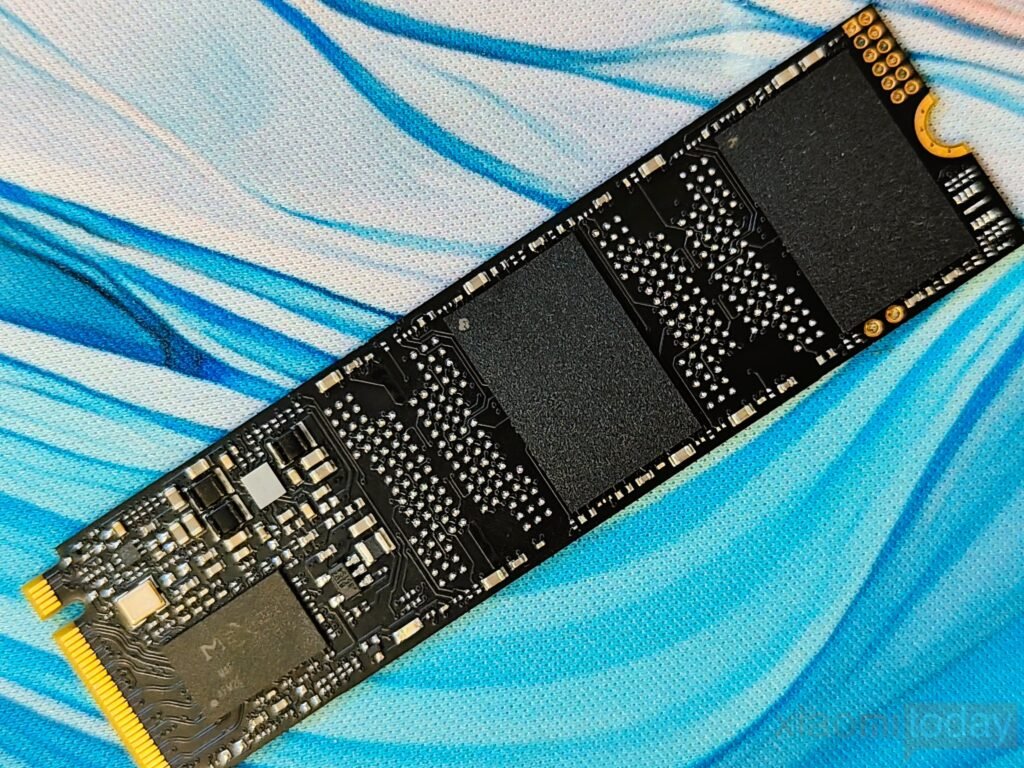
After peeling off the top label, the ORICO O7000 SSD reveals a clean single-sided layout housing two 512 GB NAND packages and a Maxio MAP1602A controller. The NAND chips are 232-layer QLC from YMTC, rated at 2400 MT/s, and paired with a 4-channel MaxioTech controller built on a 32-bit ARM Cortex R5 core. While this isn’t a flagship-level configuration, it’s a practical setup for mid-range PCIe 4.0 drives. The absence of onboard DRAM is worth noting, but the drive makes up for it with Host Memory Buffer (HMB) support, which allows it to use a portion of the system’s RAM for caching tasks.

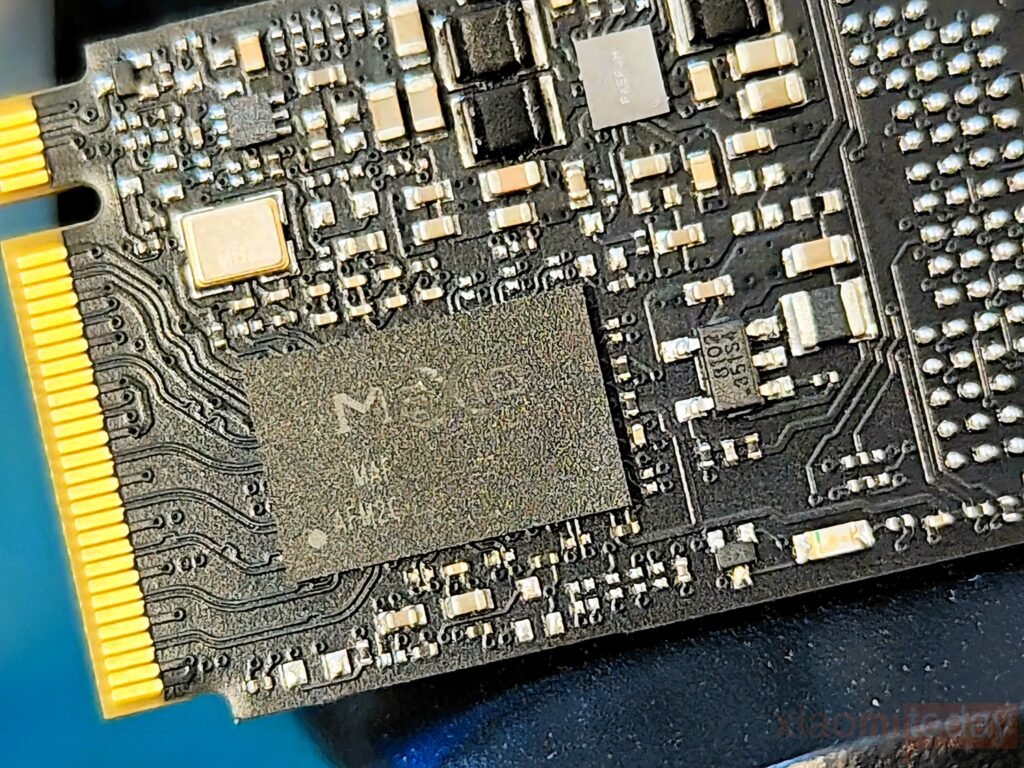
Rated for up to 7000 MB/s sequential reads, the ORICO O7000 aims to compete with more premium Gen4 drives, at least on paper. It supports common NVMe 1.4 features like S.M.A.R.T., TRIM, and NCQ, but skips hardware encryption, which might be a downside for users with security in mind. The use of SLC caching helps manage burst workloads, especially during large file transfers or application launches. However, with its QLC NAND and lack of dedicated DRAM, performance may taper off in sustained write scenarios—something to keep in mind depending on your workload.
Benchmark Test
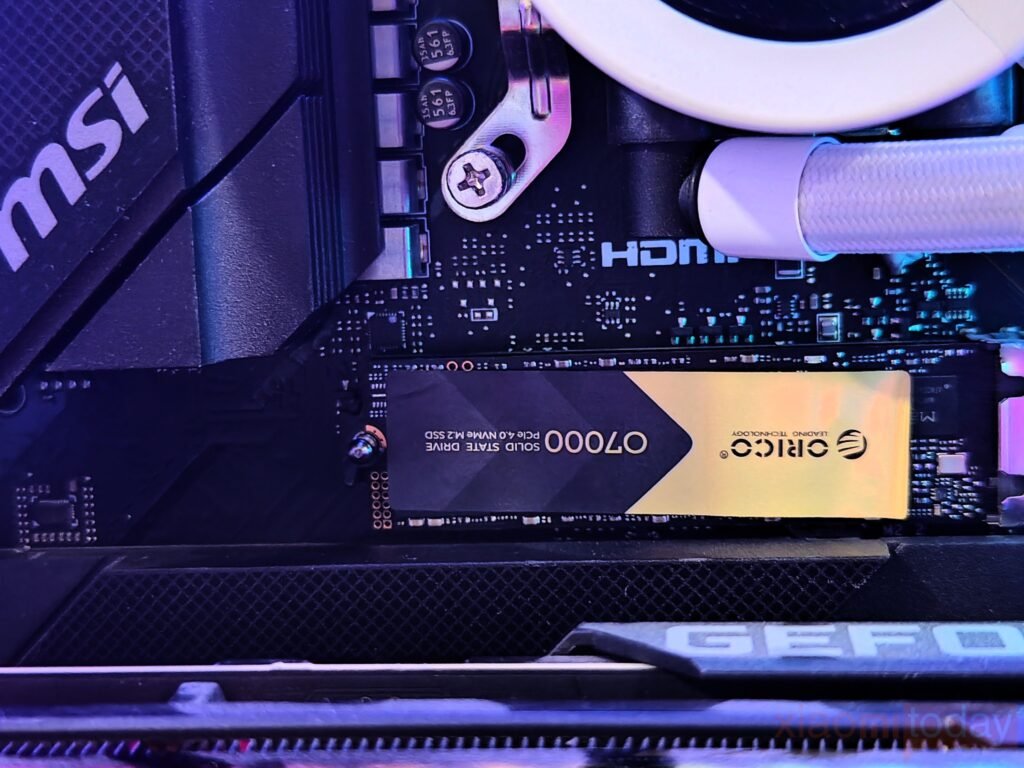
For our performance evaluation, the ORICO O7000 SSD was installed in the primary M.2 slot of the MSI MPG Z790 CARBON WIFI II DDR5 motherboard, paired with an Intel Core i7-13700K processor. This specific slot is wired directly to the CPU and supports full PCIe 4.0 x4 bandwidth, eliminating any potential bottlenecks from chipset routing. We used a combination of synthetic benchmarks and real-world file transfer tests to assess the drive’s capabilities across different workloads. This approach provides a balanced view of both peak throughput and day-to-day usage scenarios. All tests were run under controlled conditions with consistent cooling to ensure repeatable results.
CrystalDiskInfo and Thermal
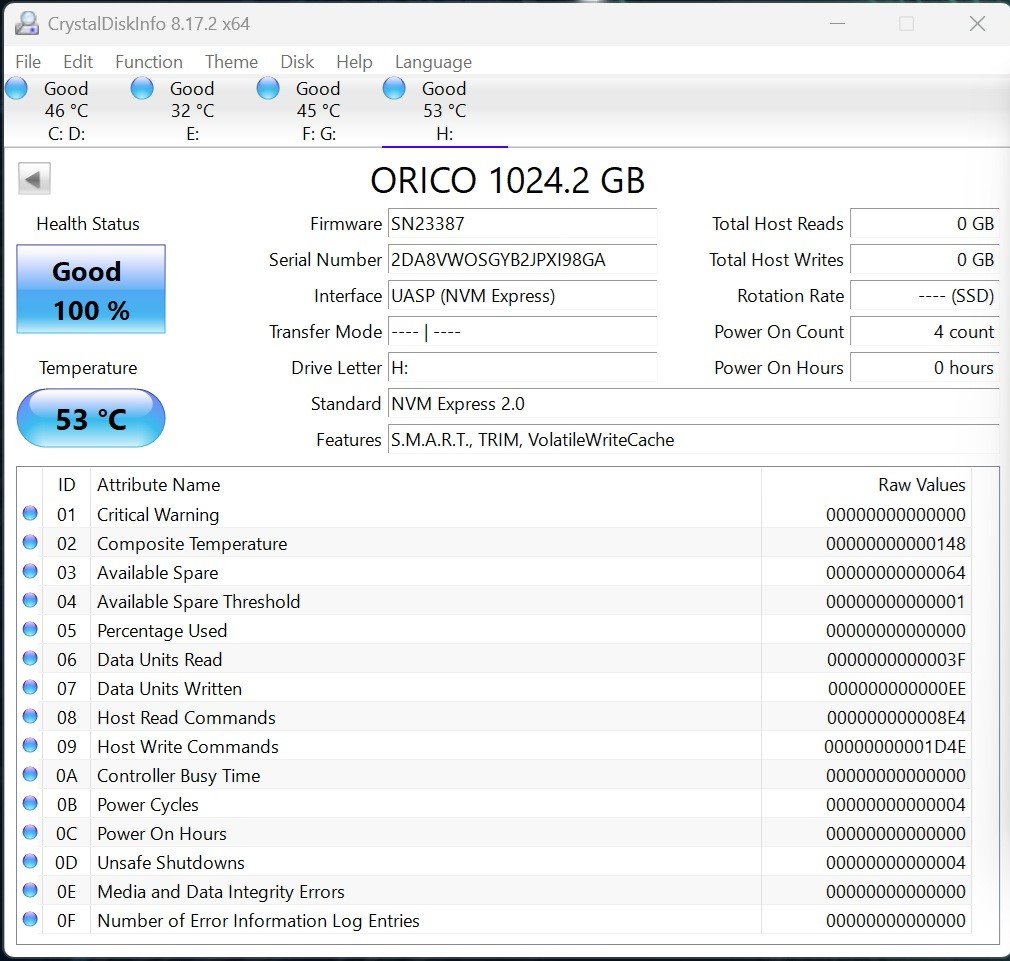
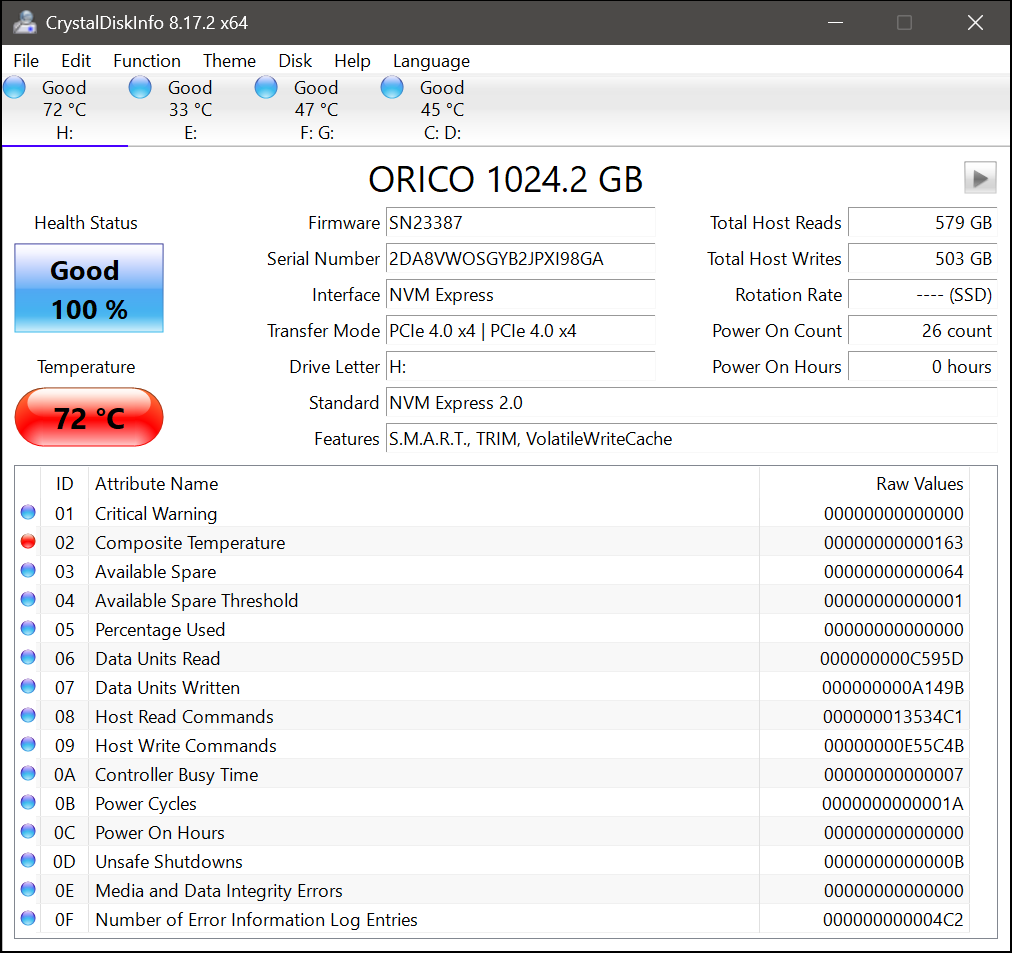
The ORICO O7000 NVMe SSD supports SMART monitoring, TRIM, and complies with PCIe Gen4x4 and NVMe 1.4 standards. CrystalDiskInfo confirms these features and provides thermal data, showing idle temps around 53°C and peak temps of 72°C under heavy loads. While within safe limits, good airflow or a heatsink is recommended for thermal stability. The 1TB model offers 953GB of usable space, and all benchmarks were run on a blank drive.
CrystalDiskMark Performance
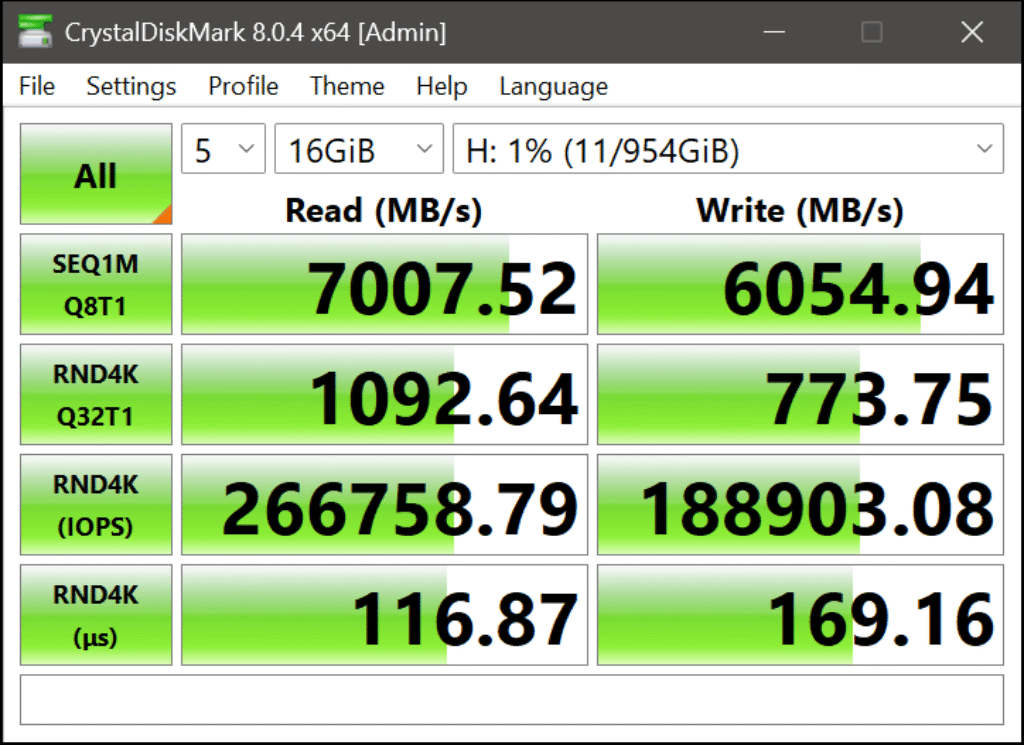
CrystalDiskMark 8 results indicate strong sequential read and write performance from the ORICO O7000. In testing, it achieved 7007.52 MB/s read and 6054.94 MB/s write speeds. These figures are very close to the rated specifications and indicate the drive can consistently deliver top-tier throughput. In the 4K random test, it produced 116.87 MB/s read and 169.16 MB/s write speeds, which is competitive for high-performance consumer-grade SSDs. The sequential results, in particular, make this drive well-suited for large file transfers and game loading.
AS SSD Benchmark Analysis
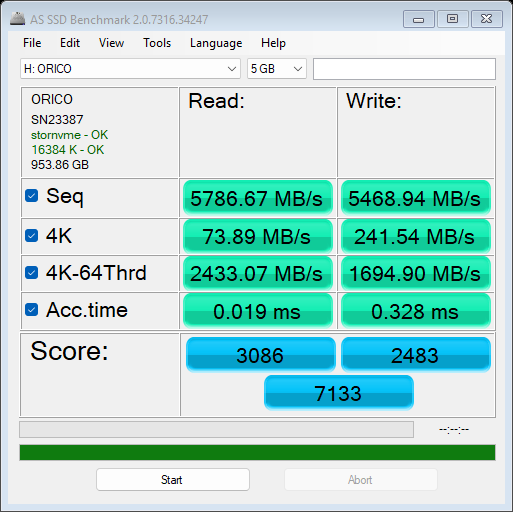
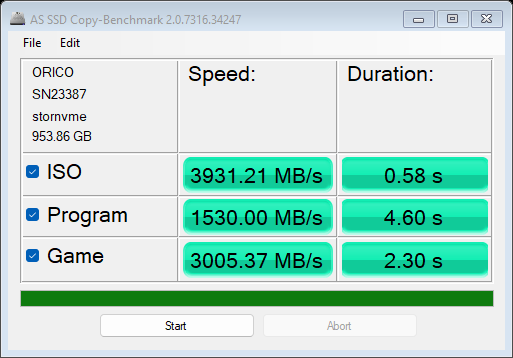
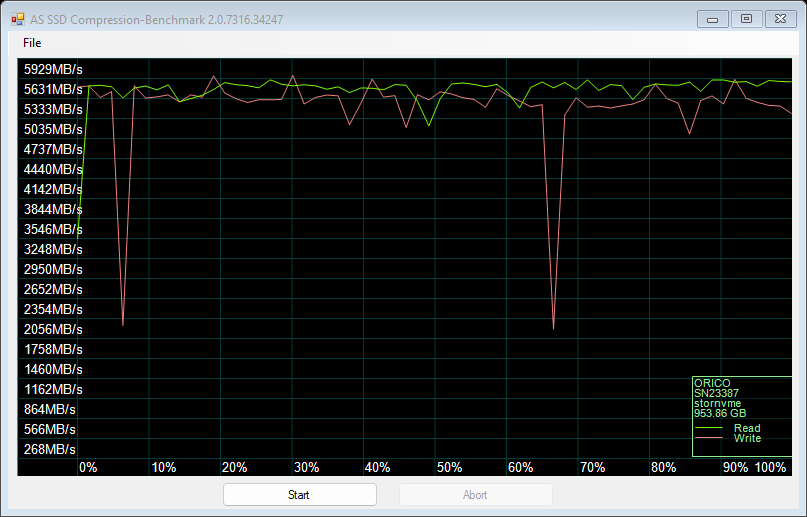
Moving to the AS SSD Benchmark, which tends to produce slightly lower numbers due to its data pattern, the ORICO O7000 posted 5786.67 MB/s in sequential read and 5468.94 MB/s in sequential write speeds. More importantly, the 4K random performance remained consistent with 73.89 MB/s read and 241.54 MB/s write results. The overall score was 7133 points, reflecting solid performance across different workload types. Latency figures were also within expected ranges, with minimal delay during both read and write access, which contributes to a responsive experience during everyday use and gaming.
ATTO Disk Benchmark Results
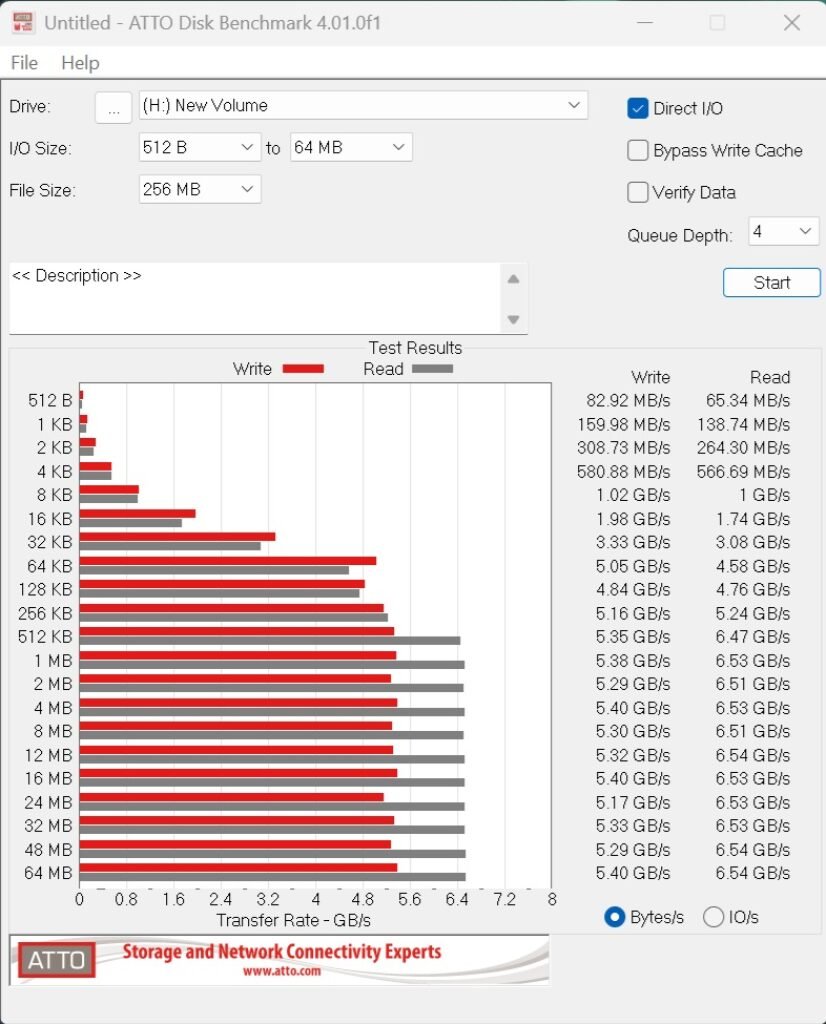
In ATTO Disk Benchmark, where performance is evaluated across multiple file sizes, the ORICO O7000 maintained excellent consistency. It reached a peak read speed of 6.54 GB/s and a peak write speed of 5.40 GB/s when handling larger files (64MB and above). Even with smaller files (starting from 4 KB), the drive delivered stable throughput with minimal drop-offs. This consistent scaling across the size spectrum suggests that the firmware and controller are well-optimized, ensuring performance stability whether dealing with large media files or small system data.
Anvil’s Storage Utilities Test

The Anvil’s Storage Utilities test provides a broader overview of IOPS, latency, and throughput combined. In this suite, the ORICO O7000 scored 23,061.99 points, positioning it among the upper tier of Gen4 SSDs. The test captures real-world workload simulations such as OS operations, gaming, and heavy multitasking. High IOPS and low latency figures observed during this benchmark reinforce its capability to handle varied computing scenarios, including content creation, data compilation, and AAA gaming installations.
TxBENCH Results
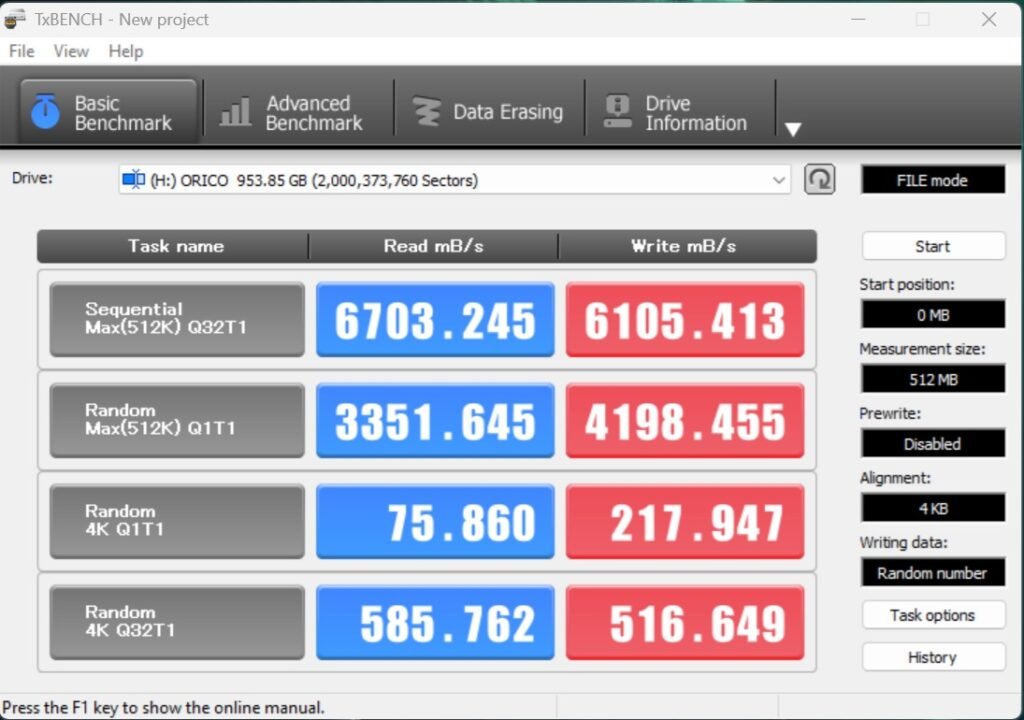
TxBENCH performance aligned closely with other benchmarks. The SSD delivered 6703.245 MB/s read and 6105.413 MB/s write speeds. The consistency between multiple benchmarks speaks to the drive’s stable controller and NAND pairing. No significant performance throttling was observed even during repeated test loops, further emphasizing its ability to sustain heavy sequential workloads without compromising output.
Across all benchmark utilities—CrystalDiskMark, AS SSD, ATTO, Anvil’s, and TxBENCH—the ORICO O7000 maintains a strong position within the PCIe 4.0 SSD market. It consistently hits or comes close to its rated speeds, offers competitive 4K random performance, and shows solid thermal management with passive cooling solutions. These characteristics make it a well-rounded option for users building gaming rigs, upgrading workstations, or simply looking for reliable, high-speed storage.





